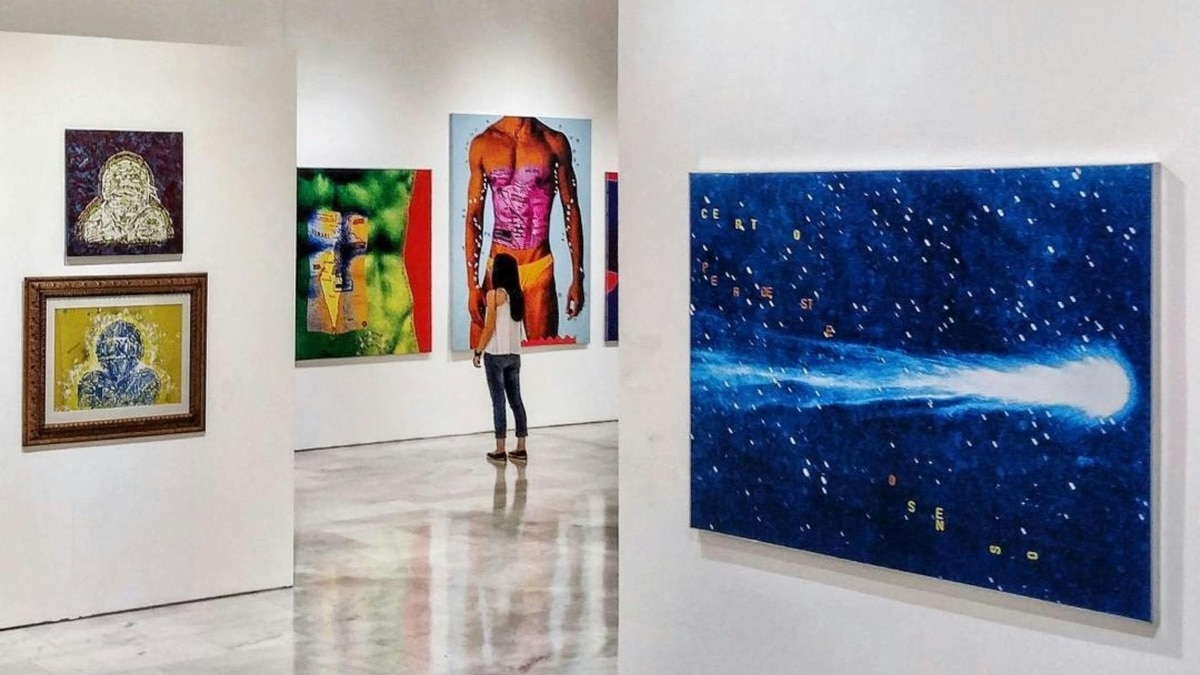
Can you manifest the social media feed you want?
Game the algorithm to turn your feed into a vision board.


When it comes to the device that knows more of your shameful secrets than your dearest friends do, breaking up with it can be tough. How much money did you spend on Thai food last week, how many unread emails do you have, and how many steps you got in today (spoiler alert: it’s in the dozens)—your trusty phone keeps track of it all. In fact, unlike most others in your life, it can even seem like your phone is able to read your mind.
You mentioned you need a new pair of sneakers, and Instagram ads were only too willing to oblige. You caught a whiff of a perfume and wondered what it was—there it is, in your Google search suggestions.
Okay, so that last one might be due to confirmation bias. Your electronic devices can’t track your thoughts just yet, but research shows they are tuning into ambient conversations, picking up useful tidbits to target advertisements towards you. In a sense, your relationship with social media is a form of manifestation; your thoughts can shape what you see, which can in turn shape your thoughts as you scroll.

And scrolling is an inevitability. In order to keep consumers engaged on their platforms for as long as possible, social media algorithms work on our brains the same way as slot machines. As former VP of user growth at Facebook, Chamath Palihapitiya, admits: “The short-term, dopamine-driven feedback loops that we have created are destroying how society works.”
Inside the dopamine machine
The fleeting pleasure of seeing a funny reel or a notification triggers a bump of dopamine—and social media apps have cracked the code, making us expect a feel-good stimulus after performing a sequence of behaviours. Every time we’re proven right, the association between these behaviours and the rewards of dopamine grows even stronger in our minds.
Considered proprietary technology, the algorithms that so deftly exploit our brain chemistry are sealed inside a black box, a mystery to most of us. Still, when you see how many social media platforms end up adopting the same technology, you can get a sense of what features are the most addictive. Just look at the suggested content feature. The algorithm gauges what people like you like, and what you’ll like based on your previous interactions. It also shows you less of the content you don’t engage with, curating a feed that reflects your interests and nothing else.
The consequences of this echo chamber are beginning to show. Algorithmic radicalisation is the process of users being nudged by social media platforms down the rabbit hole of self-confirmation until they end up seeing only extreme content. That’s why your search for high-protein recipes eventually leads you to a carnivore influencer who snacks on sticks of butter—and you watch in horrified fascination, feeding the platform with valuable engagement minutes.
As we gain awareness of how social media grabs hold of our brains and our time, how can we take back control? The algorithm itself offers an answer in the form of manifestation. If our social feeds represent our thoughts and behaviours made real, showing us only and exactly what we want to see, aren’t they just following the Law of Attraction?
Manifesting a virtual reality

In 2006, Rhonda Byrnes’ The Secret was released to massive sales, buoyed up by support from Deepak Chopra and Oprah. So popular was the book (based on a movie released the same year) that The Secret has since become a registered trademark. The titular secret is based on the Law of Attraction, which has three tenets: Ask for what you want, believe that you will get it, and be open to receiving it. In these last two steps, you have to think, feel, and behave as if you’ve already gotten what you want—informing our modern ideas of manifestation and affirmations.
The latest iteration of the Law of Attraction has grown from the intangibility of social media. Harper’s Bazaar UK describes the TikTok phenomenon “lucky girl syndrome” as a form of manifestation that focuses on attracting good fortune into your life. As cultural commentator Rebecca Jennings points out, Gen Z’s rebranding of The Secret for social media engagement is no different from micro trends like cold-girl make-up—a catchy way to breathe new life into a well-worn idea. In fact, it’s not that different from The Secret’s rebranding of the Law of Attraction, either. Lucky Girl Syndrome is a generational update, and it’s definitely more SEO-friendly.
It’s not surprising that the idea of manifestation appeals to young people who increasingly feel a lack of control over their lives. Does it really matter if they study hard when there are so few well-paid jobs to be had? Will separating plastics at home make a dent in an ocean of bottles? When individual decisions don’t stand a chance in the face of systemic problems, the logic is that delulu really can be the solulu.
There’s a distinct irony in the fact that proponents of lucky girl syndrome and manifestation are usually influencers who use their own lives as proof—and who often enjoy the same systemic privileges that they urge their followers to simply manifest. A corollary to the Law of Attraction is that if, for some reason, believing you’re wealthy and beautiful doesn’t actually make you wealthy and beautiful, you must be doing something wrong.
Practising manifestation using the algorithm
The union between social media and manifestation doesn’t have to be unholy. The algorithm turns pseudoscience into science, making manifestation not just belief, but concrete action. As long as we don’t limit manifestation to merely thinking about the things we want, there is real psychology behind it. For example, positive thinking makes us happier, which is a predictor of success, while cultivating a growth mindset gives us the self-confidence to work hard and achieve our goals.
Since social media is determined to show us what we want to see, the Law of Attraction suggests that we have the power to transform the doom-scroll into a vision board. Here’s how to make the algorithm work for your mental health, for once.
Set a clear intention
We use social media for everything—from keeping in touch with friends to keeping up with news (and, fine, celebrity gossip). There are a thousand and one reasons to open an app, and before you know it, half an hour has passed while you scroll. As with all manifestations, the first step is setting a clear intention. What exactly do you want to use social media for? What role does it deserve in your life?
Finding this clarity might be a process of trial-and-error, and could even require chats with a friend or therapist. The most important factor is what makes you feel in control of your social media, rather than the other way around.
Visualise your desired reality
By mentally investing in a vision of what you want your social media feeds to look like, you’ll gain an understanding of the goal you’re working towards. Luckily, our brains are visual processing masters, and social media is all about the visual experience. At last, we can make this link work in our favour.
Think about what kind of content and creators you want to see, and how you want to feel when you look at your recommendations. All of these visualisations should serve your main intention, that is, what you want to use social media for. By simply searching for and following those things, you can manifest this vision into reality.

Look for the negatives
To start thinking positively, you have to be aware of negative thoughts. The opposite of affirmations, this step can help you identify what you don’t want from social media. Maybe constantly comparing yourself with others leaves you feeling unhappy, or the temporary high of a well-performing post is ultimately unfulfilling. Even if you need social media to serve a purpose in your life, whether personal or professional, you can cut the toxic feedback loop that comes with it.
Break your intention down into goals
You want to use social media as your fitness inspiration, but you keep bookmarking workouts and then forgetting all about them as you scroll through #gymspo selfies. Instead of setting vague goals that your brain can easily avoid, be specific. If your intention is to improve your fitness, your goal might be to follow three certified trainers and try three of their workouts every week. If you want to stay in touch with friends, set a 30-minute time to reply to messages and stories—no scrolling allowed.
Give your feed a spring cleaning
Remember when we identified the toxic elements of social media consumption? It’s time to take out the trash. Brutally unfollow the accounts that are cluttering up your feed with useless information and negative feelings. Acquaintances you haven’t seen for years? Schoolmates who’ve faded into obscurity? The now-defunct YouTube channel you started following years ago? Toss them all.
Digital space might be free of cost, but it takes up real estate in your mind. If you’re on the fence about unfollowing, the mute and unsubscribe buttons provide a middle ground.
Finally, a caveat that goes against the grain of manifestation: make sure your goals and expectations are realistic. Your relationship with social media won’t necessarily transform overnight. Like the algorithm, manifestation is a constantly evolving process.
Also Read: What you could be doing wrong in your manifestation journey
Also Read: How to manifest the job of your dreams










